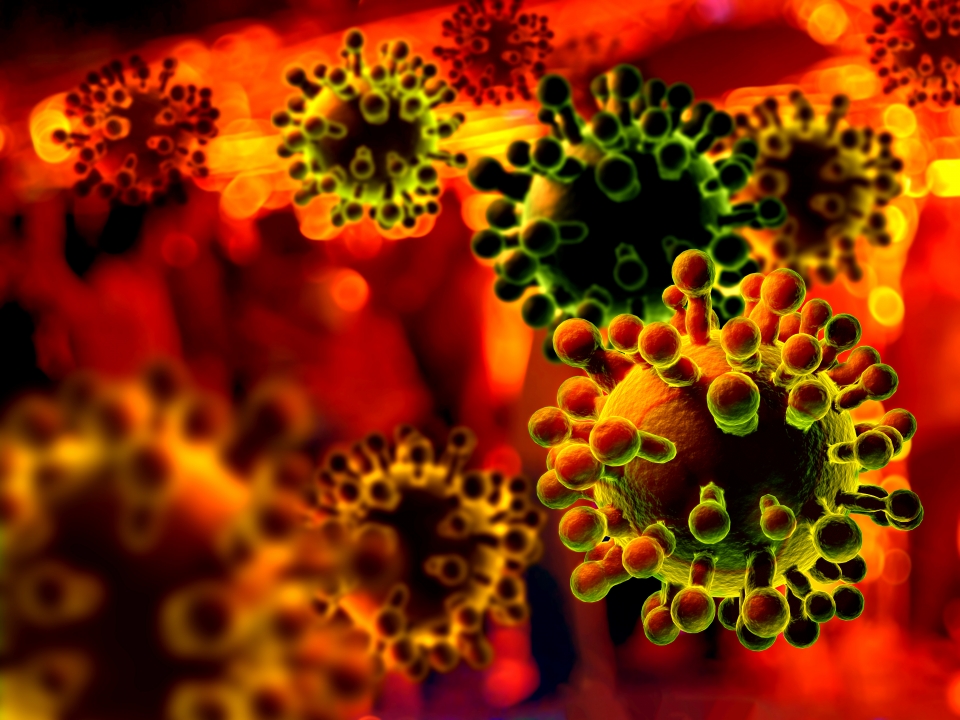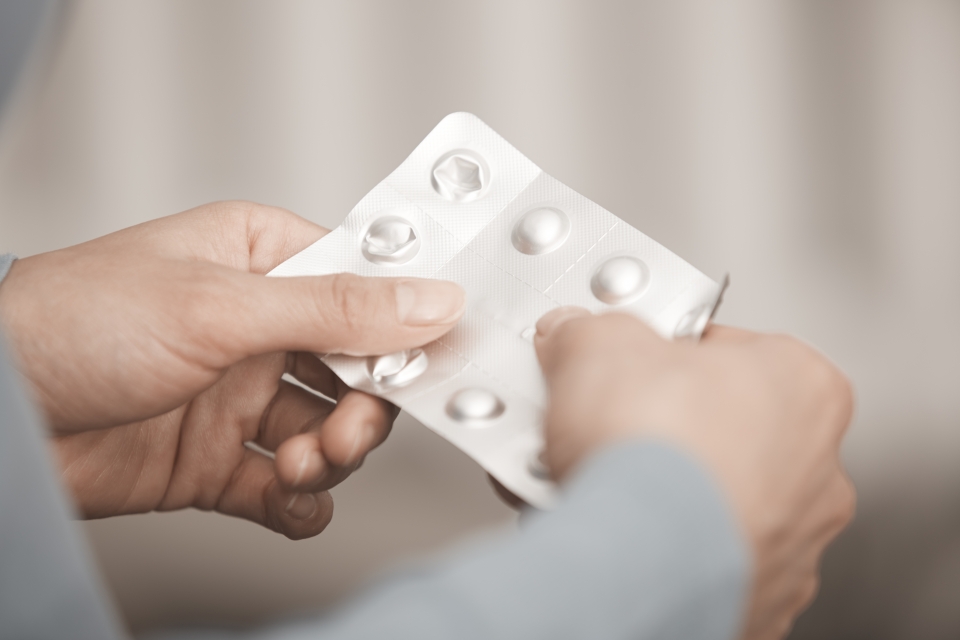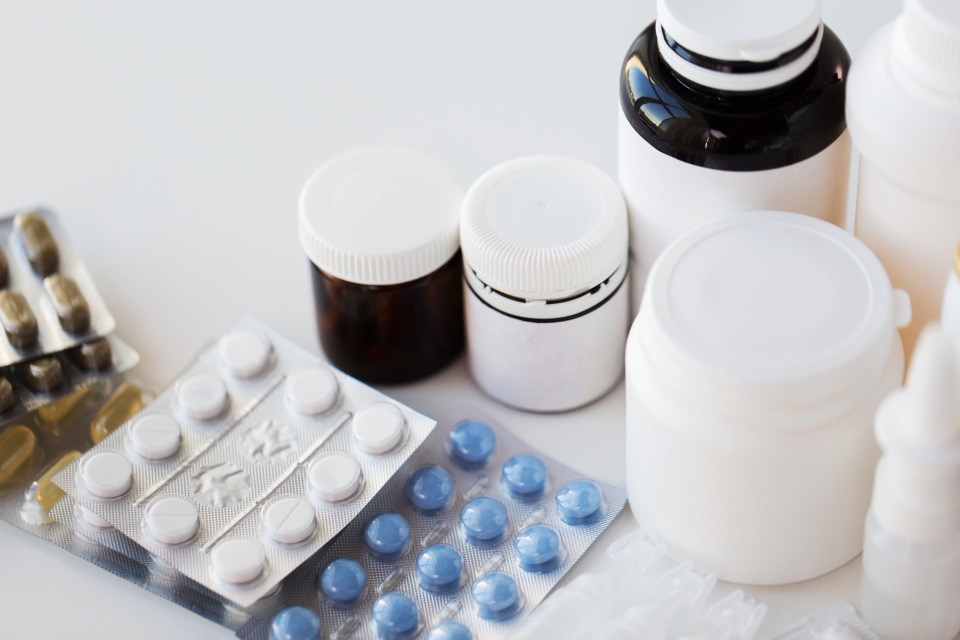
Chloroquine has become the center of debate as the coronavirus (COVID-19) pandemic unfolds across the globe. President Donald Trump has touted the malaria treatments hydroxychloroquine and chloroquine as potential therapies against COVID-19 despite them not being proven in scientific studies.
Against this backdrop, rheumatology experts conducted an audio interview published in the Annals of Internal Medicine Thursday.
Professor Robert M. Centor from the University of Alabama Birmingham School of Medicine conducted the interview on rheumatologists Alfred Hyoungju Kim from the Washington University School of Medicine and Jeffrey A. Sparks, associate professor at the Brigham and Women’s Hospital.
The following is a transcript of the audio interview.
Centor: We will discuss the appropriate use of hydroxychloroquine and chloroquine and why there is so much fervor regarding these drugs. I know some people who obtained a prescription for chloroquine and are hoarding. I also know a young woman who has lupus and who had to get chloroquine prescription but she had to drive an hour each way because there was no place locally to fill it.
I believe the fervor over hydroxychloroquine and chloroquine were handled well in your opinions piece in the Annals. So let’s start off with what is hydroxychloroquine and chloroquine and why would you consider to use these drugs for COVID-19.
Kim: The antimalarial drugs hydroxychloroquine and chloroquine have been recognized to be effective in rheumatic diseases. They have some anti-inflammatory properties and may also blunt responses to inflammatory stimuli such as nucleic acids and immune cells. So they have been effective for rheumatic disease such as rheumatoid arthritis and lupus for quite some time. And it’s been part of our arsenal for a few decades.
There have been numerous in vitro studies looking at the effectiveness of hydroxychloroquine and chloroquine to blunt viral infectivity and this is largely due to one of the mechanisms that these drugs have, which is that it prevents the acidification of endosomes so that they don’t become lysosomes.
So many viruses such as chikungunya, HIV, dengue virus and coronavirus all need to establish infection within endosomes and requires the acidification of the endosome to generate the infectivity within the cell. So in vitro, there has been numerous data for all the virus listed to attenuate viral infectivity by adding hydroxychloroquine and chloroquine.
The translation to humans, though, as a therapeutic or prophylaxis has been less successful. There has been some data where it was successful at times and unsuccessful at others. As a result, these drugs are not part of the routine arsenal.
There was a nicely done randomized trial for influenza prophylaxis where antimalarial drugs could not attenuate infection rates among people. Despite this past history, there has been enthusiasm with the COVID-19 pandemic because of good in vitro studies with coronavirus to attenuate viral infectivity.

Centor: You mentioned the use in rheumatic diseases. Do you have a rough idea of the number of people taking hydroxychloroquine prior to the outbreak?
Sparks: As rheumatologists, prior to the outbreak, we were the main prescribers of the drug and the main treatment was hydroxychloroquine. For some patients we also tried other antimalarial drugs such as chloroquine and quinacrine but the vast majority of patients are on hydroxychloroquine.
Hydroxychloroquine is FDA approved for malaria and rheumatoid arthritis and lupus. Now there are much better antimalarials so we don’t use it as much for that indication in the US. As far as the number of patients, it’s a bit hard to get a grasp on it but certainly we feel that hydroxychloroquine and antimalarials are essential for lupus patients. The recommendations are that all lupus patients should take it as long as they don’t have intolerability or allergies to that. Related to non-adherence and those issues, we think 60~70 percent with lupus are taking hydroxychloroquine.
For rheumatoid arthritis, it’s more of an add on therapy and so it’s hard to estimate how many people are taking the drug but my guess is around the 10~25 percent range. The clinical indications are to improve inflammatory rash, among others so it is used off label for many indications for rheumatic diseases that have many manifestations. As far as how many people are on it, it’s around 1 million in the US and many more worldwide.
Centor: So then we have a drug that is relatively inexpensive, widely available, and studies that suggest that it’s good for COVID-19. There doesn’t seem to be any perfect studies but could you summarize these studies? Please also elaborate when hydroxychloroquine might be worthwhile using and when to make the clinical decision.
Sparks: We’ll go through some of the human data. The first study that made a biggest splash was the investigators out of Marseille who did an open label nonrandomized trial investigating hydroxychloroquine versus control.
The study had no placebo. It was all open-label. We can go over the many flaws of the study but as rheumatologists and physicians we yearn for a safe and effective treatment for COVID-19 so I’ll say upfront that there are hints of efficacy in this environment, But this trial was nonrandomized and this is the biggest thing to think about because most patients with mild COVID-19 really do clear the virus by themselves.
So in a nonrandomized trial, you’re not sure if you’re aligning people within the same trajectory of the disease course (so if you’re off even by a bit so that one arm that is further into their disease course or closer to disease clearance), it may systematically look like the patients are improving when it’s really related to that nonrandomization.
Some other issues with the trial is that they looked at viral clearance at day six, and there were patients, that seem only to be in the hydroxychloroquine arm, who had very poor outcomes related to ICU transfer and even death. It’s not exactly clear why but they were excluded post baseline in a way that skewed the data to look favorable for hydroxychloroquine by eliminating some patients that had objective poor outcomes.
There were some other issues related to the control group, that had patients weren’t able or unwilling to take hydroxychloroquine and recruited form different centers based on the study arm. However, some interpreted the data as hydroxychloroquine and perhaps the addition of azithromycin having hints of efficacy.
In this day and age, I would say that this type of data is hypothesis generating and would lead to a more confirmatory trial but certainly physicians grappling with sick patients they only have these data so a lot of extrapolation was used.

Kim: The Marseille group also had a follow-up paper that was not peer reviewed and here, they continue their follow up on 80 patients in a single arm single center cohort study to examine the efficacy of hydroxychloroquine and azithromycin, and the outcomes were also non-clinical.
The investigators were looking for reductions of viral load using RT-PCR to detect virus in the nasopharynx cavity. They also looked at the swabs and determined how much live virus was there using a culture system.
The issue here is that obviously there is no control group and as Jeff pointed out, what they could be studying is the natural course of COVID-19 in the context of some people who got hydroxychloroquine and azithromycin. In other words, hydroxychloroquine and azithromycin may not actually play any role in here and we can’t tell because there is no control group.
While both possibilities are available for interpretation, the study wasn’t done so that we can guess one way or the other. In the end, it is merely hypothesis generating.
The other issue is that the outcome measures of decreased viral load is a surrogate outcome. What we want to know is survival or discharge from the hospital. We infer that reduced viral load will get you there and while this intuitively that makes sense, in the world of research, these things need to be demonstrated. When we use assumptions, we open up to the possibility of being wrong.
Sparks: There was recently a Chinese study that was the first, as I know of, to report results from a randomized placebo controlled trial. They recruited patients with COVID infection, for the most part they were mild infection that looked at viral clearance as an outcome.
Those who received placebo and hydroxychloroquine both had very high rates of viral clearance at seven days after randomization and, actually, numerically the placebo group had slightly higher proportion of patients who cleared the virus. So this one was a small study that was negative but it was randomized placebo controlled. I think the criticisms for this study is that if for mild infected cases, the majority is going to clear the virus by themselves, then this may not be the right patient population to study considering the vast majority will get better without an intervention.
Kim: There was one last Chinese study from Wuhan that has been making the rounds on Twitter. This is a pre-print but this was another double blind randomized parallel group trial where they used hydroxychloroquine for 5 days and the control group got usual care. These were adults with mild disease. And there were two clinical outcome measures: one was fever and cough reduction. There was also a radiological outcome, which was a recovery on CT scan from pneumonia.
This study did show improvements in clinical outcomes and also improvements in CT scans that weighed in favor of the hydroxychloroquine group. But the issue with this study, for lack of a better term, and I speak colloquially, is that the study was done sloppily.
The original study that was submitted (pre-registration study) had different primary outcomes than what was published. They used viral load and T-cell recovery time. I feel like in this case they were measuring clinical outcomes and they found post hoc they found better clinical outcomes in those receiving hydroxychloroquine.
These types of exploratory analyses render statistical analyses challenging to interpret. There are also other issues regarding the types of statistics they had used in terms of methodology that we find troublesome.
The other thing is that they were trying to register 300 patients but only 62 were reported. So this study is very underpowered because the sample size wasn’t defined a priori in this particular paper. It makes it look like this outcome that they’re looking at were realized post hoc and it renders the p values virtually meaningless in my book.
So these data are interesting because it does say hydroxychloroquine has better clinical outcomes but there were so many methodological errors within the study so that it makes me worry that the actual study was done with the right rigor.
Centor: Are there any data that support prophylaxis? I know people who are taking hydroxychloroquine thinking that it’ll keep them from getting COVID-19
Sparks: Really the only data I’m currently aware of are in vitro data. We alluded to some already. Certainly from an extrapolation standpoint, you can think about treating mildly infected patients and shortening their disease course which is logically applied to a prophylaxis indication.
However, prophylaxis is the real issue when you think about the drug supply standpoint. If you think about the number of patients infected with COVID-19, it pales in comparison to the whole rest of the us and rest of the world who could at risk.
You can certainly think about post-exposure prophylaxis to make a smaller risk group but from a supply standpoint, but this is certainly going to be the biggest threat to hydroxychloroquine. The other point, from a population standpoint, is that there are rare side effects such as conduction abnormalities, QT elongation, severe rash. On an individual basis these side effects are uncommon but if you give this treatment to millions of patients then those outcomes are going to occur. So that means risk-benefit balance has to be weighed really carefully.
Even though there are at least hints of efficacy for treatment of infection I don’t think we can call it a cure. It might shorten the course or lessen the severity but it’s not necessary a cure when we think about giving it to the entire population. We really need to understand the expected benefit and the expected risk. There are no current data, but there are really large well designed clinical trials ongoing for prophylaxis in general as well as for post exposure prophylaxis. We will probably get an answer soon but I think that puts people with disease at risk now because this is the because the biggest threat to the supply.
Kim: In the most recent analysis conducted a couple days ago, 60 some patients registered within the COVID-19 Rheumatology Global Alliance. The registry has about 25 percent of confirmed COVID-19 patients who were taking hydroxychloroquine at the time of diagnosis. We will be extrapolating whether it has prophylaxis use but there are patients who had been taking hydroxychloroquine before getting COVID-19.
Centor: So to summarize it seems that chloroquine and hydroxychloroquine, at least in the lab, has some interesting features. There are a number of not perfectly done studies that show some promise but no magical properties.
Kim: I think that’s very well stated.
Sparks: Obviously, this is a crisis situation. Rheumatologists are familiar with hydroxychloroquine, and we didn’t envision being in this position. Certainly, I’m sure Alfred would echo this, but these are drugs that are essential medications to those where the efficacy and safety are well delineated. They are FDA approved and have accumulated decades of experience.
Certainly, we hope for a prevention and treatment for COVID-19 with hydroxychloroquine and chloroquine. We would support these indications if proven.
In the meantime, we know that these drugs help our patients and we want to have these patients stay on them. In a way, if decisions are made to use the drug in different indications we need to prioritize patients who really need them.
I have anecdotes of people not being able to get hydroxychloroquine and having to get getting a signed letter indicating that the drug use is for rheumatoid arthritis. You can imagine that some of these patients don’t have the means to get these drugs. It really is a supply issue that is similar to the issues related to PPE and ventilators. If hydroxychloroquine and chloroquine are essential for COVID-19, then we need to make sure that all patients get it.

